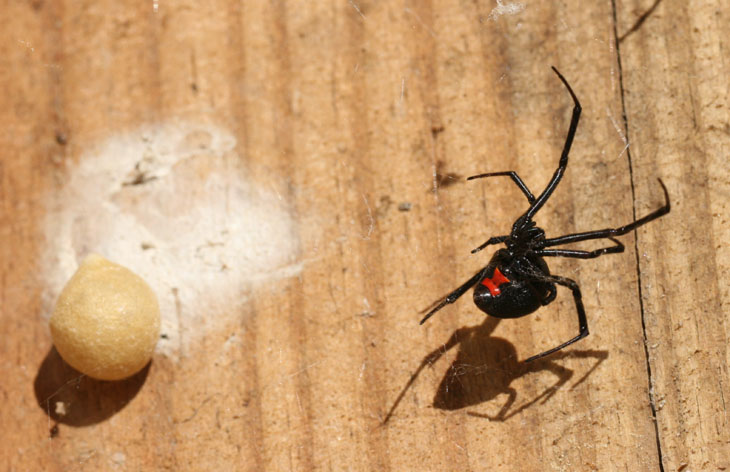This is partially an extension of a previous post about the amount of lying that is found within religion, and partially thoughts sparked by a post elsewhere on cults. While a lot of people feel there is a distinctive dividing line between religion and cult (most especially, no one feels they are a member of a cult,) it’s actually fairly hard to define the difference, but within the examination we can find some telling traits.
There is no firm definition of a cult, and it is usually up to individual interpretation; to put it as directly as possible, religions are socially acceptable, while cults are frowned upon, often even dangerous. That’s not really much to go on. The thing to take from this is that it’s backward: rather than using some set of criteria to determine if some organization/practice fits into the “bad” category, instead we should be considering how we feel about the practices themselves, and how justifiable they are.
To illustrate, take a look at the comparison table here. Do things like, “People are free to speak out against the tenets of a religion,” “Clergy are expected to be responsible for their words and actions,” and, “Critical thinking is allowed and sometimes even encouraged” sound like many religions you know? Does this mean we can consider mainstream christianity in America a ‘cult’ every time someone whines about those pesky scientists not considering god, or how their rights are violated when they cannot exterminate gays? It would make it a lot easier, I’m sure. (In counterpoint, this site shows an approach that’s not quite so fatuous.)
We have to back up to think about what a church (not a religion) even is in the first place. Generally, it is a common meeting place where specific views are expressed and encouraged – at the same time, other views are actively discouraged. The whole point of it all is to get a group of people together, because of one key factor: we’re a social species, which tends to ‘go with the flow’ and feels uncomfortable speaking out against a crowd. We can be accepted by simply repeating the party line. That’s it. That’s a church – that’s why they exist. Do you really think that it takes weekly sessions throughout one’s lifetime to absorb one book, one set of tenets, one approach to morality and behavior? Even surgeons eventually get to leave school and work on their own, and what they need to know is a hell of a lot more involved than any religion that exists.
We go back to those two sources linked above; one says that a cult “Exploits and manipulates its members with mind control techniques,” while the other says, “Cults are at risk of becoming exploitatively manipulative and abusive to members” – these same sentiments can be found from virtually any source that defines a cult. Yet the whole point of churches is to use exactly this methodology. As just one example, we are told incessantly that “faith is a virtue,” but why should we consider faith to be anything of the sort? Belief without evidence? Isn’t this glorifying gullibility? Do we really want to encourage people to listen uncritically to anything?
But it’s through just such efforts that we have significant portions of cultures around the world that believe there are two different realms in existence: one that obeys physical laws and can be observed, and used with pinpoint precision; and one where souls live and miracles take place and anything at all can happen. And the only reason we even know about the latter is because someone else insists that it exists, and even that atypical events or strange feelings are manifestations of it. If we dare ask for proof, we get assertions that we should never ask, and should only just believe. It’s peer pressure, pure and simple; preying on the human traits of community and acceptance.
Studies about altruism, about behavior and familial ties, about tribalism, and even just basic genetic theory, all support the concept that we have strong ties to family, weaker ones to our community or tribe, and exceptionally poor ones to ‘outsiders’ – this is remarkably apparent in organized sports, where the language of “we” and “they” is omnipresent. But long before we had these studies, churches (among many others) yet recognized the human tendency to lock into a community group, literally instinctively. While the Cult Hotline and Clinic site above states that cults destroy the family unit (and it’s not alone in this sentiment,) this isn’t exactly true – they redefine what the family unit is. Of course, so do churches, usually in the nature of extending the family unit to the whole congregation and their use of the term “father.” It’s not that one has different practices from the other, it’s simply the degree that either carries it to.
A distinctive facet of every community, one that few people recognize, is that to have an ‘inside,’ there must be an ‘outside’ – much is made of the camaraderie “within our walls” without realizing what the walls are even for. The walls, of course, keep out the enemy; it’s the definition of ‘enemy’ that churches establish and reinforce. The whole idea that there is an evil being or force active in the world doesn’t come from observation or clinical trials; actually, it took these to prove to us that most of the things we interpreted as this evil force, mental illness and diseases and arguing with church leaders, were nothing of the sort. But again, it’s not that the practice has stopped, it’s simply changed in the degree in which it is promoted. Take it from someone who has watched the surprise and, yes, outright horror on the faces of some people when they discover I am an atheist: the dividing lines are not only very present, they’re strongly reinforced. Yet it isn’t just such big issues, as demonstrated by how many churches can be found in any area, even when they are all ostensibly christian in nature. Religion splinters precisely because people draw their dividing lines between “us good folk” and “those bad folk,” and it’s not the scripture that defines it, but in what way someone wishes to interpret that scripture. [As a quick aside, this is a small part of the reason why I find it so amusing whenever anyone says that their book provides “guidance.”]
Once groups of people get established, no matter what nature, they can easily become self-perpetuating. While a charismatic leader is often involved (this usually considered the mark of a cult as well,) it is only part of the equation; most of the reinforcement comes from the participants overall. The establishment of acceptable and unacceptable behaviors or attitudes is important. Most people envision ‘peer pressure’ as teenagers harassing one another over what’s cool, but in reality it’s the simple trait of taking one’s cue from others – seeking what everyone else deems acceptable and conforming to that under the internal compulsion to fit in. Thus it’s not that any particular attitude is compelling by itself, or that a leader is so convincing, it’s the concept of how many others hold this attitude, and how big the division is between it and ‘unacceptable’ behavior.
It’s not shocking to anyone that like-minded people tend to get together – we don’t cherish our individuality, but our community instead. But within such communities, these tendencies can foster increasing gaps between those within and those without, because the reluctance to separate oneself from the perceived community means that any minor deviation, once initially accepted, can progress significantly in that direction. Often, this takes place in small steps. A minor variation is proposed, perhaps seeming odd but acceptable to the others, and so it becomes absorbed because it’s “not that big a deal.” After this becomes rote, then a further small variation is proposed, and the same thing happens again, eventually leading off in stages to a significant deviation from the ‘outside world’ and its standards of normal behavior. Political parties use this all the time.
I’ll give an example of peer influence from my younger days. Someone I knew belonged to a church where some members could, so they claimed, ‘speak in tongues’ – for anyone unfamiliar with this, it refers to the special language that god speaks, and one must be truly faithful to display the ability; to everyone else it’s gibberish. [To all Europeans and anyone else reading this with incredulity: yes, we really do have people that bonzo fogus in the US. Not a lot, but they do exist.] Talking gibberish is, of course, trivially easy, so what makes anyone so fatuous as to believe such a thing? Quite simply, it’s because everyone else in the room is visibly buying into it, so even displaying a modicum of skepticism is considered rude and anti-community. Remove this gibberish-spewing person from their support environment and place them in a room of linguists to watch the change in attitude as their variable ‘word’ usage and the marked inability to actually produce godlike information is evaluated by those with an eye for detail.
But wait! It’s magical! It won’t sound the same to nonbelievers, so of course linguists won’t be able to interpret it! And god certainly wouldn’t perform parlor tricks! Ha ha, so there! Once again, I am not making this up – these really are the explanations given for the gibberish. Is this a set of supernatural properties that serves some purpose, or a base attempt to conceal the scam? I’ll let you ponder that one.
Again, it’s not just churches – I’ve seen the same behavior in UFO circles, where anyone expressing a critical viewpoint is immediately branded a paid disinformant. No, seriously. While you might think this is pretty extreme, in comparison with speaking-in-tongues it has a hell of a lot more statistical support – we have actual examples of paid disinformants…
What happens within any circles like this is that any bit of information, any concept or idea, is not considered on its own merits but only on how everyone else seems to feel about it. It’s not a lie if everyone else accepts it (and it is a lie if everyone else says it is.) You think I’m exaggerating, or being dramatic? Tell me how anyone has proven that a talking snake existed, and yet not a jackal-headed god. Go to any church you like, pick five people, and have them explain to you how christianity has more supporting evidence than hinduism (change as necessary.) Or just imagine, if you will, the reactions you would get if, during one of those speaking-in-tongues demonstrations, you stood up and said, “Okay, hang on, how do we know you’re actually talking to god?” You know as well as I do that such a demonstration of critical thinking is not going to be, as it says above, “allowed, and even encouraged.” You’re not, it’s safe to say, going to be asked back.
And even when there’s internal doubt, as there may be for, really, a lot of people in the room, there’s the judgment thing going on. Any questioning at all of the tongue-speaker indicates, according to the lore, that the questioner obviously cannot understand the ‘language,’ and is thus not devout – better to keep your mouth shut than be revealed as unfaithful. The entire room could be filled with unbelievers, every one of them unwilling to admit it, thus forming a unified front of supposed belief, all appreciating the emperor’s fashion sense.
This happens all the time, and churches are far from the only place. Classrooms are notorious for being full of people who don’t understand the material and won’t say so for fear of looking stupid to their classmates (as an occasional instructor I can say, always, always speak up – there are more of you than you think, all wanting to ask the same question. In fact, even if you understand it but suspect someone else doesn’t, go ahead and ask, just for them – be a Dude.) Meetings demonstrate this too – any largish group of people can, and often does. This is without any concerted efforts to make someone an outsider or a heretic.
Let’s examine another aspect. How early does one introduce literature, such as Shakespeare or Fitzgerald, to a child? How soon are they allowed to vote in government elections? Should this be done at five or six years of age? Many churches don’t seem to think this is too early to get exposure to their religion, often taken out of context and rather freely editorialized. The claim is that this instills an early and lasting moral compass in people, but this is complete horseshit; the grasp of ethical questions isn’t going to come without a much more mature background. People are horrified when they hear of adolescents fighting in wars, but it’s de rigueur to immerse them in religion very early. Of course it isn’t to build that moral fiber – it’s to establish the entire concept of supernaturality and magic while their minds are still impressionable and rooted in fantasy. Note that this is the exact same argument used constantly when religious groups are horrified over Harry Potter and video games and rock music and learning evolution in school. It’s only brainwashing if you don’t approve of the message…
We come back to the ‘cult’ concepts of exploitation and manipulation, and examine what kinds of attitudes are fostered with constant immersion and reinforcement, especially in a group situation. And we can stop to think that very, very few people ever treat claims critically, especially from a ‘trusted source’ – family, teacher, religious authority, favored politician, and so on. People have a wicked (and stupid) tendency to decide early on whether someone is to be trusted or not, and thereafter apply this label to everything that person says. It’s not that the argument against the Second Law of Thermodynamics makes sense, or is even understood at all, it’s simply that Preacher Joe-Bob told me and he’s never wrong.
Is repeating Joe-Bob’s horseshit still lying? Many people would think not, or at least insert the caveat that anyone doing so is acting from misguided innocence and not malicious intent – it’s not their fault if they were given false information while acting in good faith. But of course, this doesn’t make the information any less false, does it? Judging on intent and ignorance is actually switching focus from the information to a personal, emotional reaction – a little sleight-of-hand that is often counted upon. Because while the ‘innocent’ parishioner is let off the hook for not knowing any better, the misinformation is still being spread. Build the right structure around lies, and they’re permitted to slip through.
Every organized religion in existence right now is built upon a long history of prevarication. Most of the current tenets of faith have no scriptural source or, at best, an extremely specific interpretation of a vague passage. No religion today, that has roots back a few hundred years or more, would be recognized at all by practitioners from two centuries ago, much less from the time periods where the first copies were transcribed. In a way this is a good thing, because some of the proscriptions and recommendations within most scripture are downright insipid – yet, no one can make any claim of being faithful to scripture, and many have very little idea what is even in there.
But think about this for a second: the flood myth is one of the best known stories from the abrahamic scriptures, yet it is appalling in its very nature. This omnipotent being gets fed up with its creation and wipes it out in its entirety (by drowning, mind you, not a particularly humane way to go,) save for eight people and a core of animals to start population over again. We don’t even have a word for this; genocide is exponentially smaller than eradicating every species – and one must wonder what the fuck all the animals did to deserve this fate, since they don’t have free will and aren’t beholden to the commandments of man. And yet, people worship the idea of this psychotic bastard.
Now let’s look at some of the typical responses given when anyone is anti-social enough to point such things out:
“It’s a metaphor.” For what? Seriously, even considering such passages as fables, the message is unchanged.
“It’s all part of an ultimate plan.” Which no one seems to know. So, how effective is it to relate a story of petty retribution, and not the bit that explains how it’s actually good?
“It’s the word of god.” No, it’s a scattered collection of writings, translated countless times, edited even more, and wrong many times over.
“god is good.” Obviously not, if the actions are any indication at all – it’s really not hard to figure this out.
The point is, we’re not supposed to, despite that ‘early start in moral behavior.’ All of the above, and many more besides, are examples of the kind of ‘answers’ religion provides – or to be more accurate, conditioning and manipulation. Hell, the biggest three are even referred to as the ‘abrahamic’ religions, in bold reference to the idiot who was going to slaughter his son at god’s command, until god said, “Ha, j/k!” There’s a message in there all right, and it’s “Good people don’t ask questions, even when doing stupid things” – and it’s thrown right in the face of the devout, daring them to recognize it for what it is.
If anyone wants to know why religious folk are so capable of lying, it’s because they’re conditioned not to even know what the truth is, exploited by their own tendencies to take their cue from others. Which is perhaps putting it too nicely, making the devout seem like victims rather than unwilling to think critically, to recognize that humans are enormously capable of deceit, and no shortcut is going to work. Anyone who escapes from being examined judiciously is able to use that against us.
 I am changing my tactics slightly with this post, in that I am announcing Earth Day early, so you can actually plan to do something or call in sick or whatever strikes your fancy. If you needed more warning than this, well, that’s your problem – get a decent calendar next year.
I am changing my tactics slightly with this post, in that I am announcing Earth Day early, so you can actually plan to do something or call in sick or whatever strikes your fancy. If you needed more warning than this, well, that’s your problem – get a decent calendar next year.





















































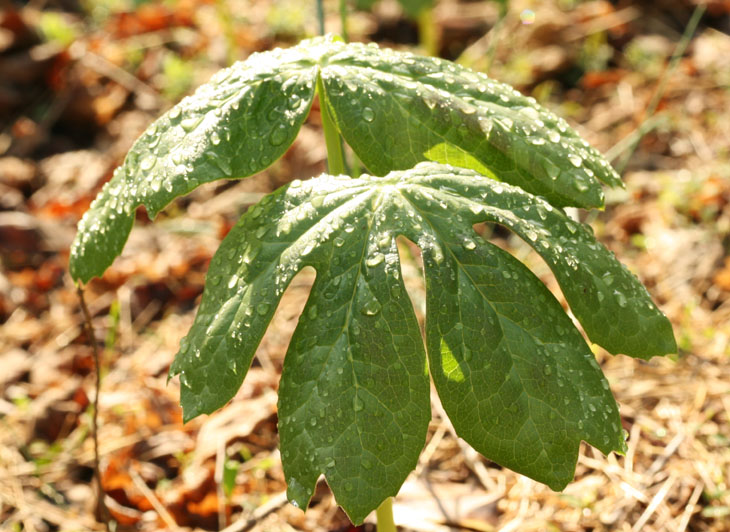
 What I have been mostly after was more detail shots of praying mantids hatching, and the park hosts several egg cases in locations I’ve memorized now. So far, no luck – one definitely displayed the debris that told me I was too late, and a couple of others seem to indicate likewise, but I’m still holding out hope I can add some nice images this year. But while there, I grabbed some other frames as I explored.
What I have been mostly after was more detail shots of praying mantids hatching, and the park hosts several egg cases in locations I’ve memorized now. So far, no luck – one definitely displayed the debris that told me I was too late, and a couple of others seem to indicate likewise, but I’m still holding out hope I can add some nice images this year. But while there, I grabbed some other frames as I explored.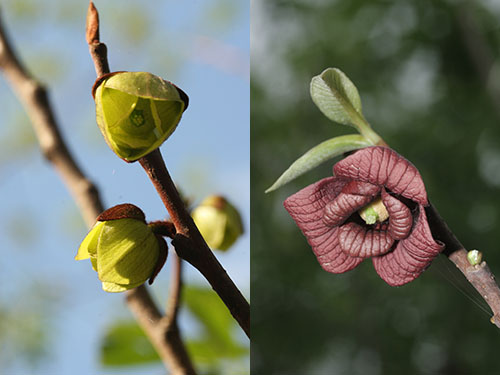 I’ll provide a couple more images of those blossoms, taken only a few days apart – if you know what these are, feel free to comment. I tried numerous different search terms for the color of the latter stages seen here and couldn’t turn up anything at all. Of course, I’m a guy, so my color vocabulary is limited – I resisted the urge to call these “beef-colored.” The leaves haven’t developed far enough yet to use as a guide, and even searching under “inverted flowers” turned up nothing that looked close. Trees have never been my thing.
I’ll provide a couple more images of those blossoms, taken only a few days apart – if you know what these are, feel free to comment. I tried numerous different search terms for the color of the latter stages seen here and couldn’t turn up anything at all. Of course, I’m a guy, so my color vocabulary is limited – I resisted the urge to call these “beef-colored.” The leaves haven’t developed far enough yet to use as a guide, and even searching under “inverted flowers” turned up nothing that looked close. Trees have never been my thing.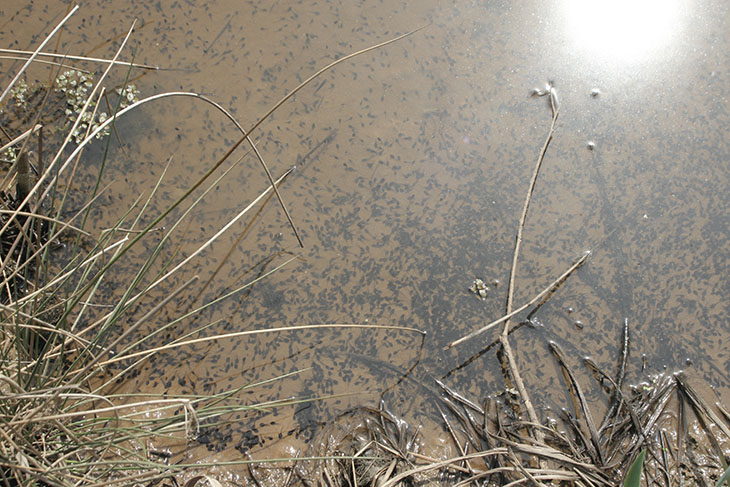
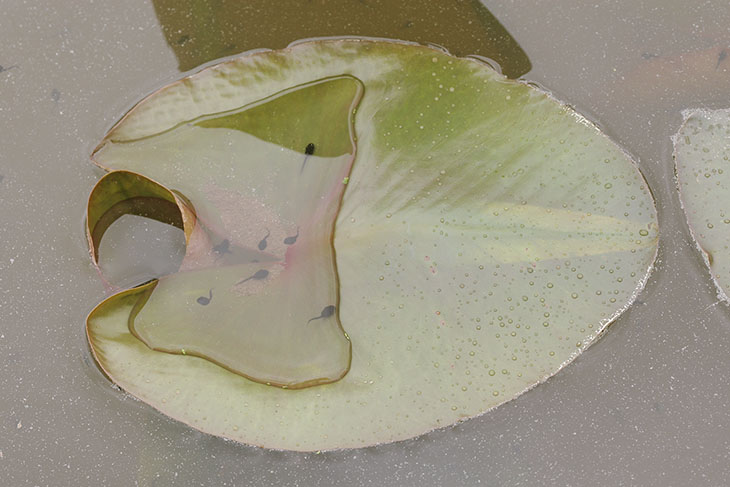

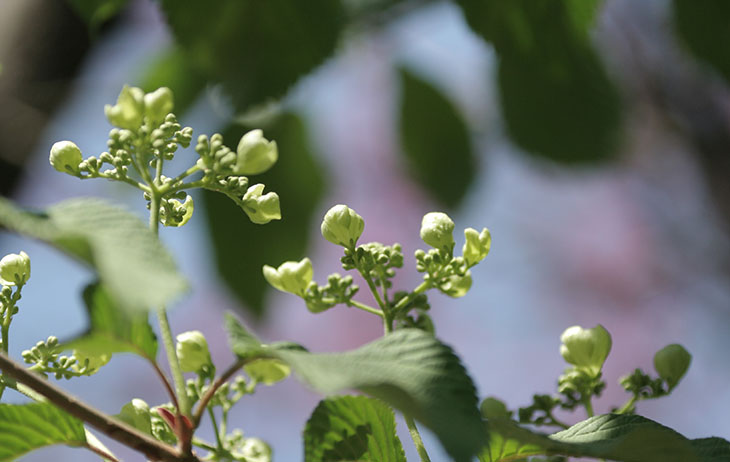
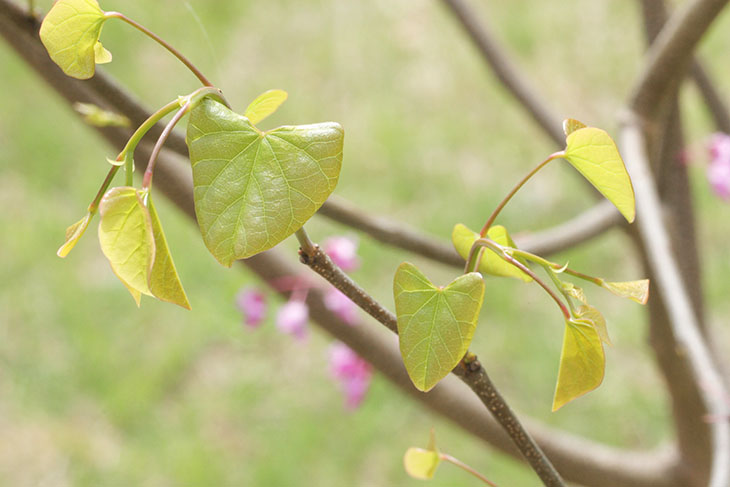
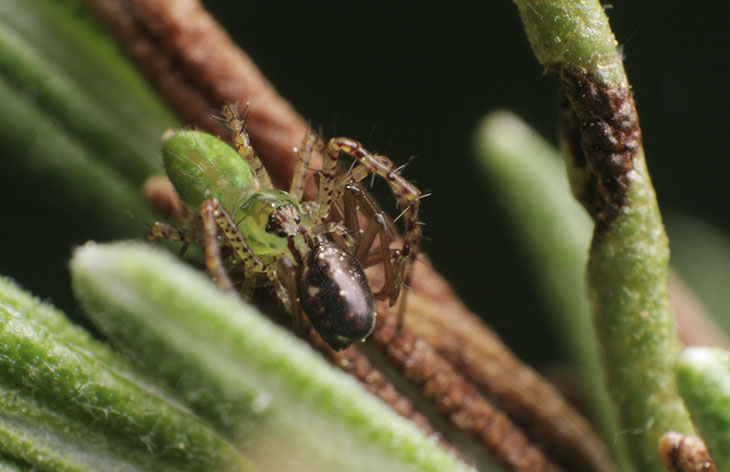

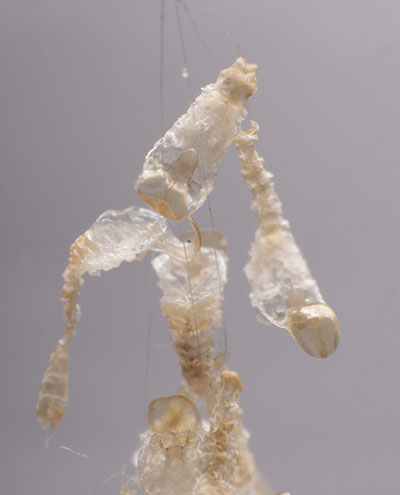 I decided to try and answer a couple of questions raised in the post about the
I decided to try and answer a couple of questions raised in the post about the 






 By the way, there’s another form of light that can fall onto the moon, called earthshine, usually visible only with a thin crescent. At such times, the sun is almost behind the moon from our vantage, shining largely on Earth at the same time (meaning the Earth would be gibbous when seen from the moon.) This light is reflected off of the Earth and shines on the night side of the moon, reflected back to us here on the night side of Earth. It is, not surprisingly, quite dim, so exposure times to capture it will almost always result in blowing out the sunlit portions of the moon. The best time to capture this is with as thin a crescent as possible, and the only times to see the moon with a night sky in those phases is right after sunset, or right before sunrise, waxing or waning crescent respectively.
By the way, there’s another form of light that can fall onto the moon, called earthshine, usually visible only with a thin crescent. At such times, the sun is almost behind the moon from our vantage, shining largely on Earth at the same time (meaning the Earth would be gibbous when seen from the moon.) This light is reflected off of the Earth and shines on the night side of the moon, reflected back to us here on the night side of Earth. It is, not surprisingly, quite dim, so exposure times to capture it will almost always result in blowing out the sunlit portions of the moon. The best time to capture this is with as thin a crescent as possible, and the only times to see the moon with a night sky in those phases is right after sunset, or right before sunrise, waxing or waning crescent respectively.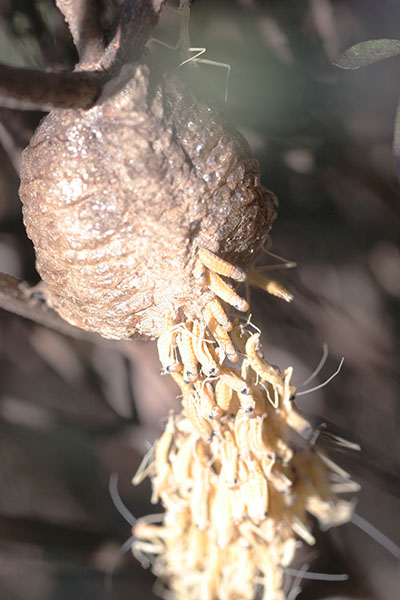 I had a post in draft form wherein I mentioned that I was keeping my eye on the
I had a post in draft form wherein I mentioned that I was keeping my eye on the 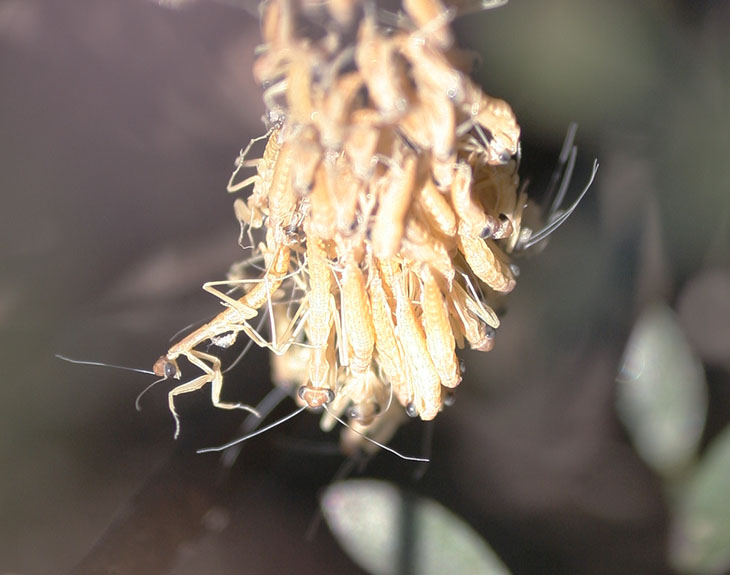
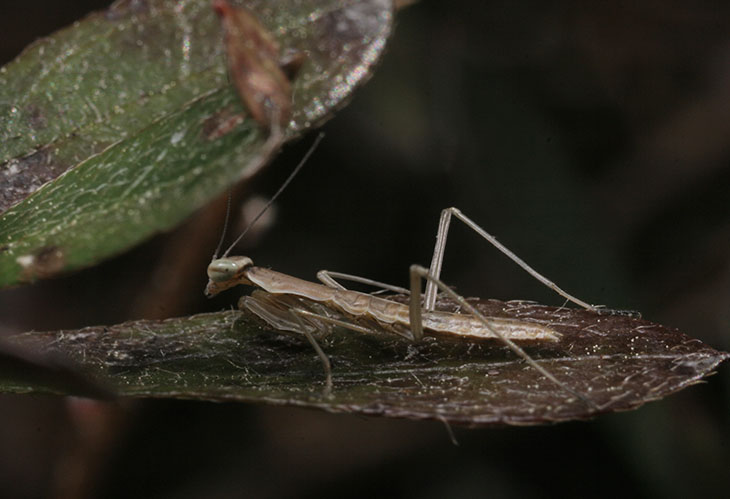
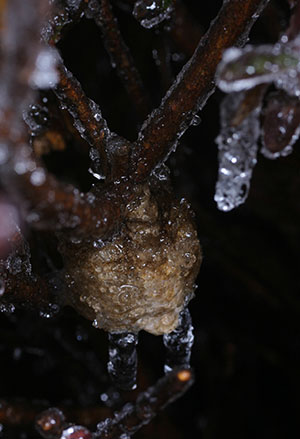 Considering that on March 7th, and again on the 18th, this egg case was coated in ice during the freezing rain storms, it’s somewhat weird that these guys are out now – not because they’ve weathered the cold, but because it doesn’t seem like winter’s actually past yet. I’m cool with all the signs of spring that are apparent now, including the first hummingbirds at the feeder, and it’s interesting to watch the ongoing family tree develop – this is the third generation of this genetic line that I’ve watched here. There are also the green lynx spiderlings still to be found, which I’ll be watching develop – most of these are a few meters away on the rosemary bush.
Considering that on March 7th, and again on the 18th, this egg case was coated in ice during the freezing rain storms, it’s somewhat weird that these guys are out now – not because they’ve weathered the cold, but because it doesn’t seem like winter’s actually past yet. I’m cool with all the signs of spring that are apparent now, including the first hummingbirds at the feeder, and it’s interesting to watch the ongoing family tree develop – this is the third generation of this genetic line that I’ve watched here. There are also the green lynx spiderlings still to be found, which I’ll be watching develop – most of these are a few meters away on the rosemary bush.